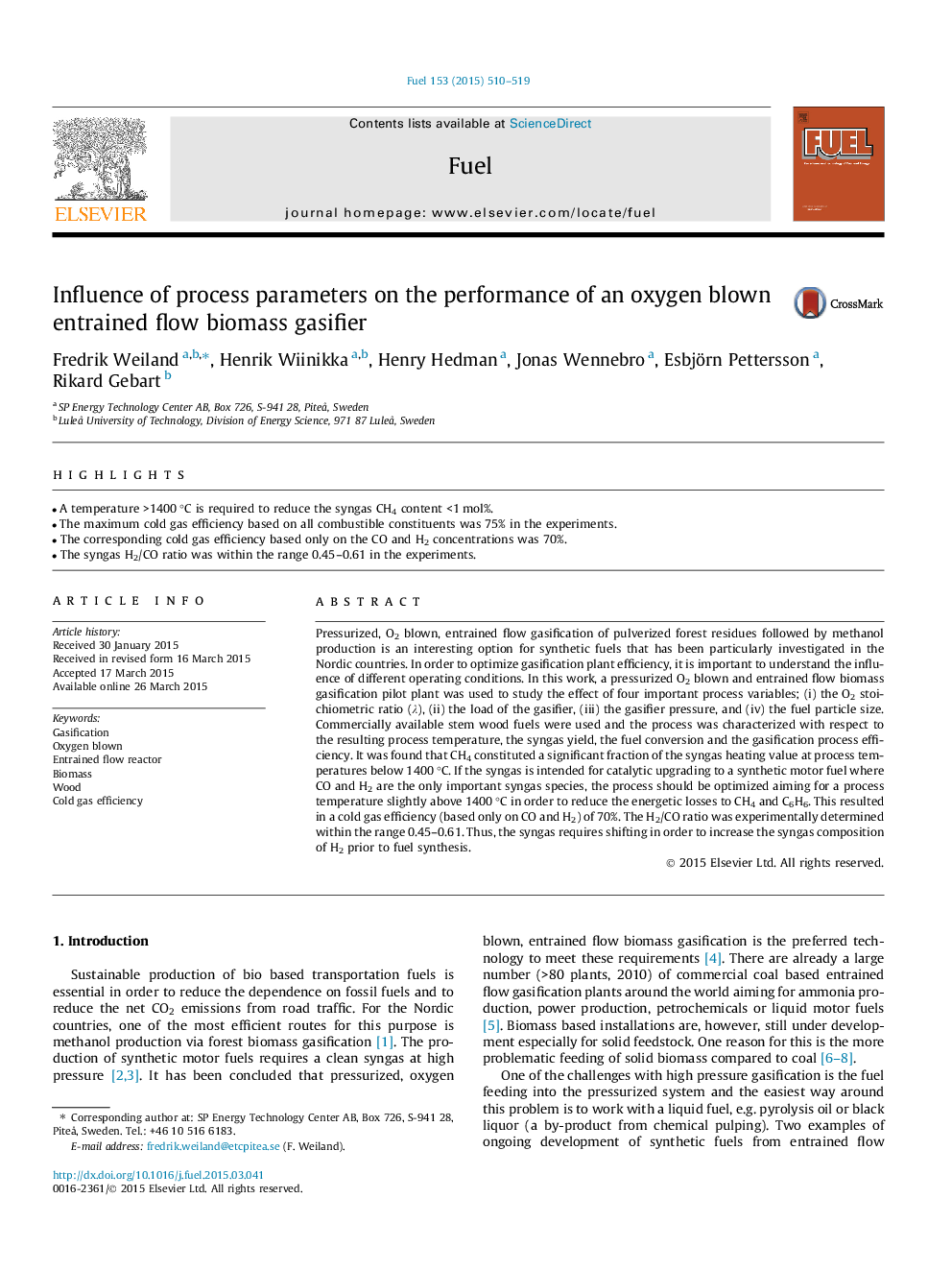| Article ID | Journal | Published Year | Pages | File Type |
|---|---|---|---|---|
| 6635621 | Fuel | 2015 | 10 Pages |
Abstract
Pressurized, O2 blown, entrained flow gasification of pulverized forest residues followed by methanol production is an interesting option for synthetic fuels that has been particularly investigated in the Nordic countries. In order to optimize gasification plant efficiency, it is important to understand the influence of different operating conditions. In this work, a pressurized O2 blown and entrained flow biomass gasification pilot plant was used to study the effect of four important process variables; (i) the O2 stoichiometric ratio (λ), (ii) the load of the gasifier, (iii) the gasifier pressure, and (iv) the fuel particle size. Commercially available stem wood fuels were used and the process was characterized with respect to the resulting process temperature, the syngas yield, the fuel conversion and the gasification process efficiency. It was found that CH4 constituted a significant fraction of the syngas heating value at process temperatures below 1400 °C. If the syngas is intended for catalytic upgrading to a synthetic motor fuel where CO and H2 are the only important syngas species, the process should be optimized aiming for a process temperature slightly above 1400 °C in order to reduce the energetic losses to CH4 and C6H6. This resulted in a cold gas efficiency (based only on CO and H2) of 70%. The H2/CO ratio was experimentally determined within the range 0.45-0.61. Thus, the syngas requires shifting in order to increase the syngas composition of H2 prior to fuel synthesis.
Related Topics
Physical Sciences and Engineering
Chemical Engineering
Chemical Engineering (General)
Authors
Fredrik Weiland, Henrik Wiinikka, Henry Hedman, Jonas Wennebro, Esbjörn Pettersson, Rikard Gebart,
